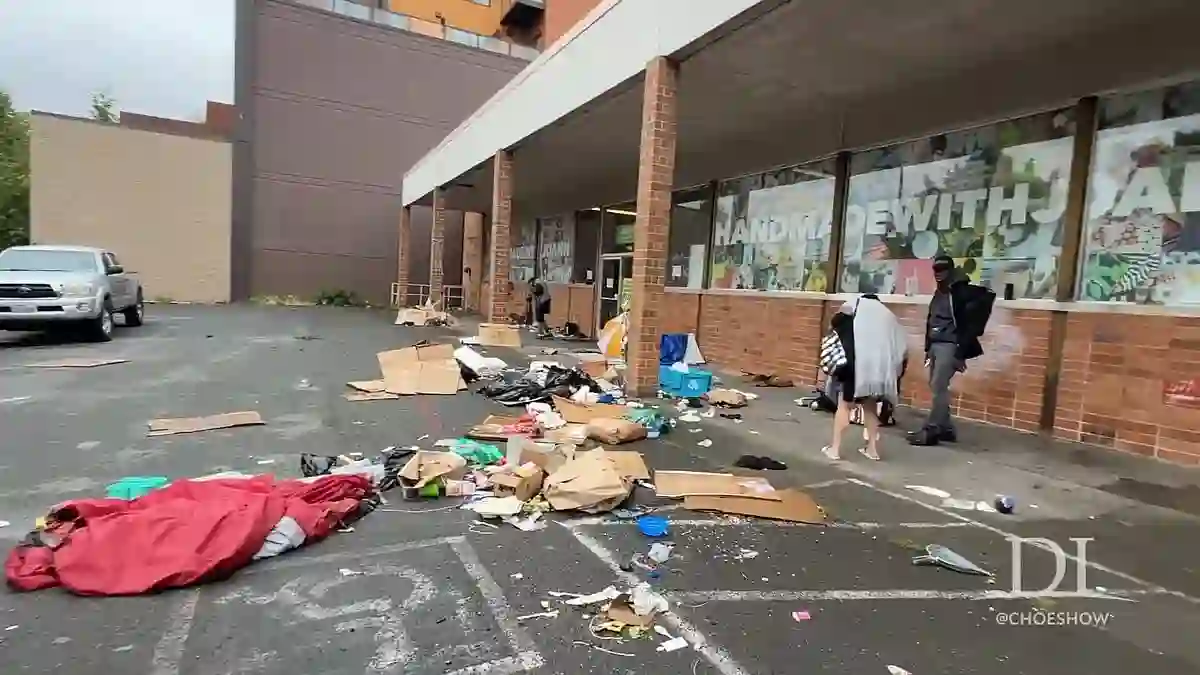Running a business is tough enough without unexpected hurdles, but for Sam Hawley, a Seattle business owner, things took a frustrating turn after his vacant property was overtaken by a homeless camp.
Instead of receiving support, Hawley found himself hit with fines by city officials — a situation that left him feeling caught between a rock and a hard place.
Homeless Camp Moves In Amid Business Closure
Hawley’s business, JOANN Fabric and Crafts, went bankrupt earlier this year.
Not long after, he noticed that a group of homeless people had set up camp in the parking lot of his now-empty building.
The area quickly deteriorated as the encampment grew, causing local concern.
While Hawley was already working on installing a fence — a project costing over $30,000 — the city stepped in with fines for graffiti, lack of fencing, and other code violations before the work was even finished.
City Fines Arrive Without Warning
Hawley says he was shocked when the fines rolled in, especially because no one from the city reached out to offer a warning or help to fix the issues.
“It just started with fines right away,” he told KOMO News.
“There was no forewarning. No offer to fix it. Just penalties.”
He described feeling squeezed between the reality of homelessness and the city’s bureaucratic pressures.
“On one hand, you have the homeless. On the other, you have the city coming at you,” he explained.
Police Called But No Action Taken
Despite multiple calls from neighbors reporting issues like squatting, trespassing, and drug use at the camp — located worryingly close to a children’s playground — city officials have yet to take decisive action to remove the encampment.
This inaction has frustrated both Hawley and the local community.
The Cost of Compliance and Bureaucracy
After receiving an initial fine of $684 for building code violations, Hawley was automatically enrolled in Seattle’s Vacant Building Monitoring program, which led to more inspections and additional fees — including a $332 follow-up inspection and a five percent “technology fee.”
Even after bringing the property up to code, Hawley found himself caught in a bureaucratic loop that felt excessive.
“I understand the need to address vacant buildings,” he said. “But this feels a little overboard.”
A Call for Understanding and Flexibility
Hawley pointed out that the homeless camp’s takeover happened during the brief period he was away from the property, trying to cope with the closure of his business.
Although he acted quickly to start repairs and install fencing, the delays meant the city was already issuing fines.
“It would just be nice to have a little grace period,” he said.
Seattle’s Growing Homelessness Crisis
The challenges Hawley faces are part of a bigger picture in Seattle, which has become a focal point for homelessness in the United States.
A 2024 federal report revealed that over 57 percent of Seattle’s homeless population lives without shelter — a stark contrast to cities like New York, where only 3 percent are unsheltered.
Since declaring a state of emergency in 2015, Seattle’s homeless numbers have soared by 88 percent.
Today, Washington State ranks second only to California in terms of total homeless population, with over 16,200 people without stable housing.
Homelessness Numbers Put Seattle in Perspective
To put it in perspective, Seattle has roughly six times more homeless people than Chicago and ten times more than Philadelphia, despite those cities having much larger populations overall.
This growing crisis weighs heavily on residents and business owners alike.
